
If the exterior of Somerton church is unusual, the same can definitely be said of the interior. At first glance, it seems a simple place…a country church with much history and little ostentation. It is only when you start exploring that it begins to reveal the depth of its character.

The oldest part of the building is the south door, now no more than a blocked archway behind the medieval font, which is an unusual shape and may once have been the base of a standing cross. The doorway was probably the main entrance to the Norman church that stood here already by 1074. The nave is mainly twelfth century, though the arches are fourteenth century, contemporary with the tower. The north aisle was built around 1200 and the chancel added around a hundred years later. Facts and figures are all very well, and help place a building in its historical context, but they do not convey what it feels like to be standing in a place that has been held sacred for a thousand years when you cannot help but feel its story stretching across the years.

But all this is pretty standard for the older churches, whose evolution was a gradual growth, moving with the times and trends of the day. It is particularly evident in the ones that enjoyed the patronage through generations of the landed gentry and manorial lords. The changes never cease, and though the fabric of the building itself may represent a mere five hundred years of construction…half its history to date…there are many more recent additions, restorations and artefacts to admire and explore.

One of the first things to do is look up. The ceilings may hide treasures often overlooked, especially when you get sidetracked by the more obvious glories of history. Depending upon the type of roof and its date, there may be carved angels and dragons, elaborate bosses holding the junctions of the beams… or, as here, weird and wonderful creatures as corbels supporting the ancient wood.
Some that we have seen are obviously portraits of local characters and dignitaries. Some are caricatures. Others may depict virtues and vices…and yet others remain a mystery. Who is the daydreamer in the hat? What is going on with the gentleman holding his severed head over his heart? And why does the haltered horse, a motif we see very often in the older churches, have toes, strange ears and webbed feet? Is it even a horse? They usually have a more equine head…but the feet are always the same.

The next thing to attract attention is the stained glass, particularly the one in the north aisle designed by Christopher Whall, a prominent member of the Arts and Crafts movement. It was made by James Powell & Sons and installed in 1893 as a memorial to William Barnes, a patron of the parish. The window shows the Risen Christ with St James and St Paul, with the Archangel Michael, his spear propped against the wall and asleep at His feet. Michael is the ‘dragon slayer’ and is often depicted with his foot on the defeated dragon… but not here. It begs the question…what was the designer trying to say?

The east window, above the altar, is a far more traditional depiction of the birth, death and rising of the Christ. Even so, it oozes symbolism. Most interesting is the vesica piscis…the pointed ‘oval’… used to indicate the aura of divinity on the crucified and the risen Christ…while the baby Jesus lacks that aura. Does this make reference to the recognition or attainment of divinity by these final acts? Or is it a simpler symbol of birth and rebirth? The vesica is often used as a symbol for the feminine principle of creation and in the first window, none is needed as Mary, His mother, is present.

The interpretations of symbols are always personal, often their meaning is multi-layered… and there is seldom a single definitive answer. But they make you think… inviting you to question their meaning and find answers for yourself. On small piece of symbolism was less obscure and tucked away in a niche… a curious ebony cross carved with hands. In Christian terms, the hand of the Father reaches down to Man…and Man reaches up, cupping, almost holding, the dove that represents the Holy Spirit, while the hands of the Christ reach out to embrace. In many ways, it completely encapsulates the Christian message. But, in many ways, it also portrays the spiritual journey regardless of faith or doctrine.

Other symbols there are in the church too, more earthly than divine…although that depends upon how you consider them. Time and death flank the tower, in the guise of an early seventeenth century mechanism once used for the tower clock and the village bier, used to carry coffins.

Heraldic stained glass, dated 1630, shows family crests adorned with the crowned head of a Moor, said to represent outstanding deeds and prowess during the Crusades in the Holy Land, fighting for possession of Jerusalem.

In stark contrast to that religious war, a plaque commemorates William Mynn and his wife Mary who died in 1659. Mynn was a well-known Catholic at a time when Catholicism was officially frowned upon and soon to become illegal. That they are remembered in the church says a lot about the humanity of the parish of Somerton. But then, they could hardly help but bring humanity to their faith with what they saw every day behind the altar…








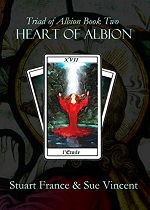






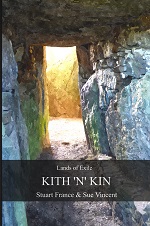


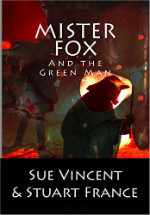
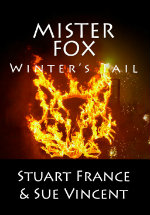




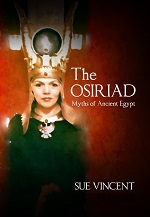










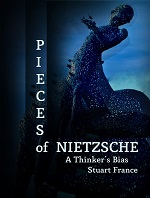
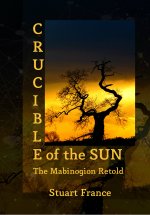


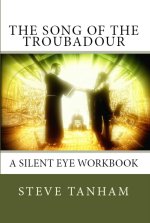


You were right and it was worth the wait. Lovely!
LikeLike
There was still more, Léa…
LikeLiked by 1 person
Lovely. 🙂
LikeLiked by 1 person
I love that ebony cross with the hands.
LikeLike
It is rather special. I’m not exactly Christian, but I would love a copy of this.
LikeLike
Lovely share, Sue. Beautiful pics.
LikeLike
Thanks, Eugenia.
LikeLiked by 1 person
Very interesting. So many of small local churches seem almost semi-deserted and yet so full of history
LikeLike
They are almosst always worth a visit…when they are left open. Saddly, the urban churches, unless they are manned, are seldom simply open to explore.
LikeLike
I know. It is very sad I agree, when you think they used to be at the very centre of the community.
LikeLike
And now they feel at risk. Even some of the country churches are kept locked now…and I hate to see a ‘closed’ sign on what is supposed to the a ‘house of God’.
LikeLike
There was so much in this post, this church. Wonderful!
LikeLike
There is a lot more in this church… I couldn’t squeeze it all into a couple of posts so there is more to come 🙂
LikeLiked by 1 person
Great!
LikeLiked by 1 person
The interior is remarkably similar to St Margarets in Wolston, where my grandfather was vicar – so much so I thought I was looking at it in some photos! The two buildings are a similar age though, so perhaps thats why… 🙂
LikeLike
One of these days we will have to have a wander up there together 🙂
LikeLiked by 1 person
Yes, that would be lovely! 😊
LikeLike
🙂
LikeLiked by 1 person
Gorgeous…fascinating…amazing! I cannot imagine a church so old. Here in the US we don’t have anything that dates that far back.
LikeLike
St Martin’s in Canterbury goes ack to 597… and re-uses much older Roman bricks and tiles as part of the building materials. I need to go there one of these days.
LikeLiked by 1 person
Yes, you do! It would make a fascinating post! 😊❤
LikeLike
The wrong side of the country at the moment though 😉
LikeLiked by 1 person